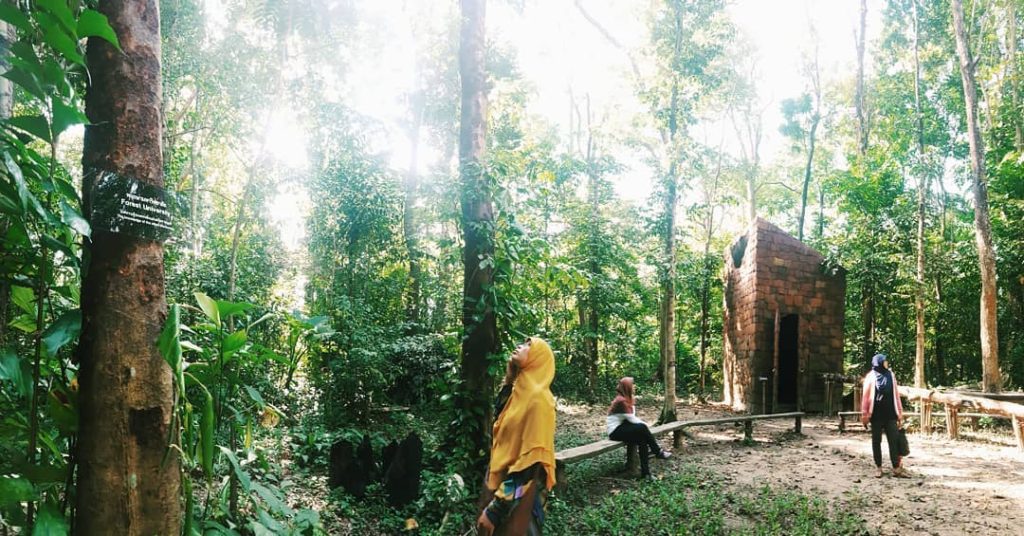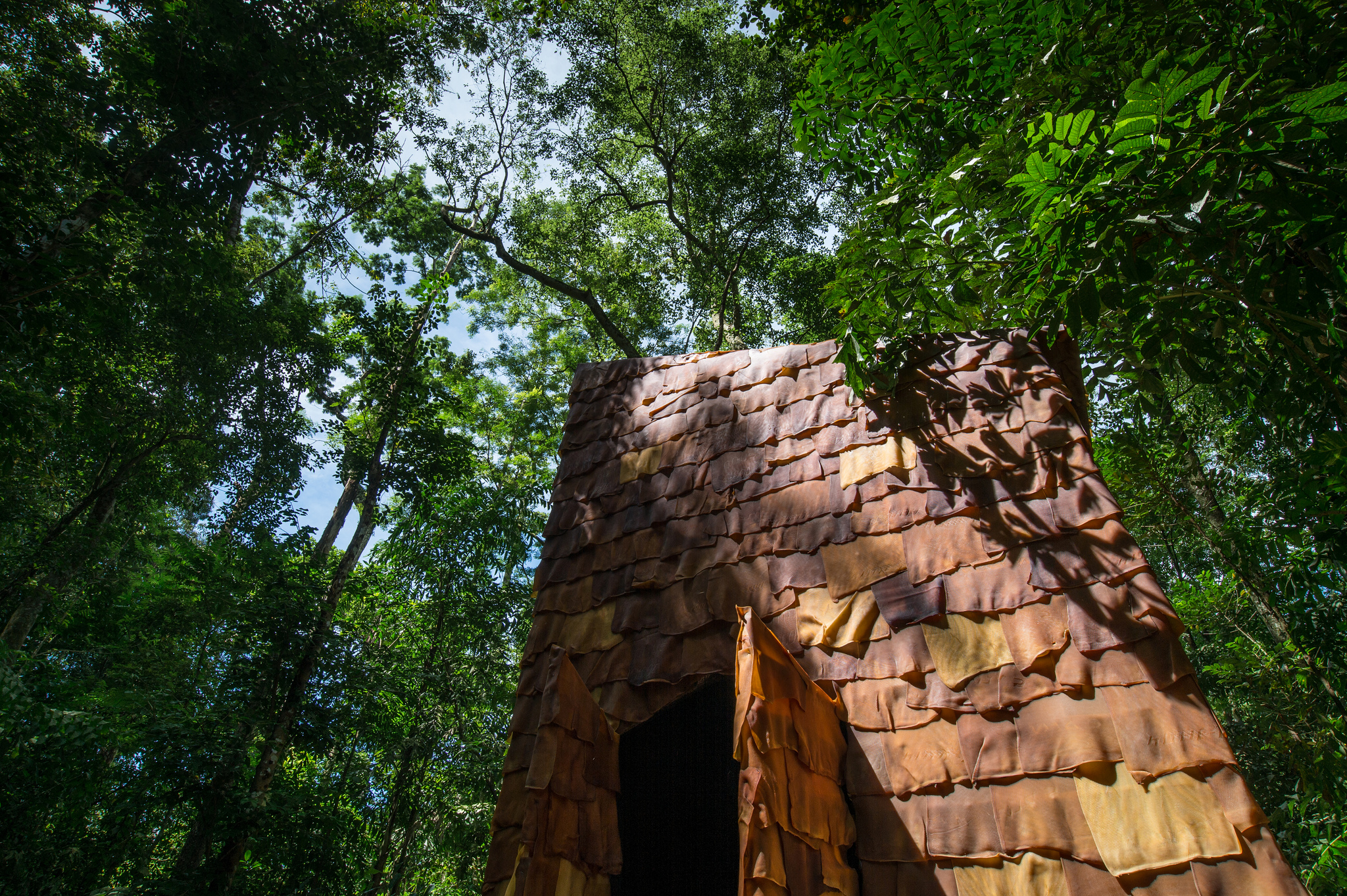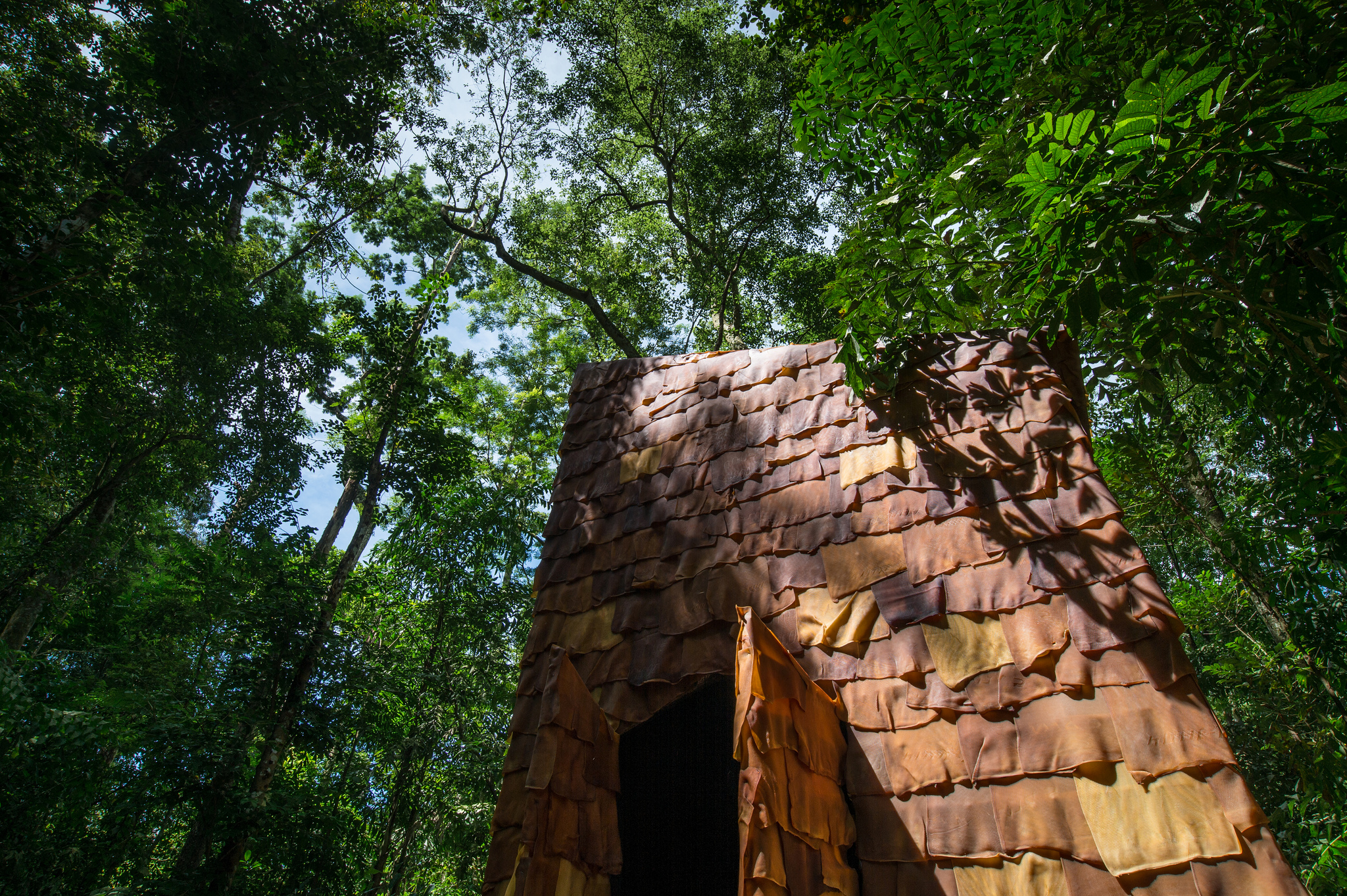Le Musée du Grand Dehors (The Museum of the Great Outdoors), 2018-19
พิพิธภัณฑ์แห่งโลกภายนอก, 2561
Carbon (Parkia timoriana, Diospyros buxifolia (Blume) Hiern); Museum: various construction materials
Le Museé du Grand Dehors (The Museum of the Great Outdoors) is a sculptural work that uses a tree as the conceptual lens through which we critically examine and expand our experience of western, human-centered notions of ‘nature’ and environment. The title is drawn from the philosopher Quentin Meillassoux of the speculative realism movement, who refers to le grand dehors as that which reaches outside of possible human perception or knowledge. Many continental philosophers, particularly in the lineage of Kant, argue that human knowledge systems are the center of what is knowable or real, because humans are the only beings capable of dimensional perception/consciousness. It is our interest to generate a work that glimpses the edges of our knowledge by expanding a single form into deep time. In this case, a tree is charcoalized into pure carbon, holding it for 2000 years.
Le Museé du Grand Dehors is a museum located in Than Bok Koranee national park in Krabi, Thailand that reveals the way humans inscribe meaning onto the nonhuman world through the conventions of museums and park systems. Walking toward the museum structure, visitors will encounter numerous signs that visually mimic the existing national park signage, but suggest the possibility of le grand dehors – the great outdoors. First approaching the root structure, visitors will travel the length of the once living tree’s trunk, fully charcoalised. They will then enter the museum, where a section of the tree is housed and protected. A fully carbon-covered interior, lit solely from the ambient light directed through the architecture, highlights the transformation of this living being into ancient and elemental carbon. Carbon is outer, carbon is other.








